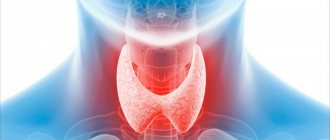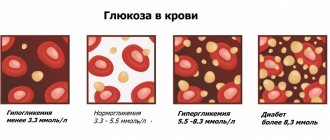When is a pelvic ultrasound prescribed?
During an ultrasound, women can see various pathologies in the reproductive organs. This study may be prescribed if:
- pain in the groin and lumbar region;
- pain when urinating;
- mucus and blood in the urine;
- changes in the length of the menstrual cycle;
- inflammation of the reproductive system;
- inability to get pregnant;
- to confirm pregnancy;
- after difficult childbirth or termination of pregnancy;
- installation of an IUD;
- possible ectopic pregnancy.
If pregnancy is confirmed, then ultrasound should be done 3 times - 1 time in each trimester. If necessary, the doctor will prescribe additional ultrasounds to monitor detected pathologies.
Ultrasound of the pelvic organs is prescribed for men with:
- inability to conceive a child;
- pain during urination;
- dysfunction of the prostate and bladder.
Teenagers may be prescribed an ultrasound if their genital organs are not developing properly, or if puberty is too early or, conversely, late.
Ultrasound can be done for almost everyone, but the vaginal method cannot be performed for bleeding, as well as for girls who have not had sexual intercourse.
Rectal ultrasound cannot be performed in cases where there is:
- anal fissures;
- haemorrhoids;
- after surgery on the rectum.
An ultrasound cannot be performed after an x-ray. This may skew the results. It is better to postpone the study for a few days.
Why does it hurt in the groin in women?
Skin pathologies
Women who remove hair from their bikini area are more likely to develop localized infections in the hair follicle area.
Folliculitis is characterized by redness and the formation of a lump, followed by the formation of a conical pustule filled with pus. The pain is raw, aggravated by pressure and friction of linen. The general condition is not disturbed. The abscess opens spontaneously and heals within about a week. The rashes are often multiple in nature, spreading from the inguinal folds to the pubis and the anterior inner surface of the thighs. If hygiene rules are not followed or the immune system is weakened, complications in the form of boils, carbuncles and abscesses are possible. The progression of the infection is indicated by increased pain, twitching, throbbing pain that deprives you of sleep at night, increased body temperature, and deterioration of the general condition.
Hernias
Inguinal hernias are diagnosed less frequently in women than in men. Characterized by dull, constant or periodic pulling and aching painful sensations in the groin. Irradiation to the lumbosacral region is possible. If the bladder gets into the hernial protrusion, pain above the pubis and dysuric disorders are observed, if the cecum is flatulence, constipation. After operations, the formation of a recurrent inguinal hernia is possible, accompanied by the same symptoms as a regular hernial protrusion.
When a hernia is strangulated, there is a sharp increase in pain against the background of physical effort and abdominal tension. The painful sensations are acute, extremely intense, and are accompanied by the development of painful shock with increased heart rate, a drop in blood pressure and paleness of the skin. A decrease in pain intensity over several hours does not indicate normalization of the condition, but the development of necrotic changes and damage to nerve endings.
In addition, pain in the groin in women accompanies a femoral hernia. In the early stages, the pathology is asymptomatic or manifests itself as discomfort and slight pain during active movements. Subsequently, a protrusion appears in the inguinal-femoral fold, increasing with straining and vertical position of the body. The pain remains dull, aching, nagging, but its intensity increases somewhat. As in the previous case, when the intestines are involved, defecation disorders are observed, and when the bladder is affected, dysuria develops.
Lymphadenopathy due to STIs
Enlarged and painful inguinal lymph nodes in combination with itching of the genitals, pain during urination, and the appearance of pathological discharge from the genital tract may indicate the development of an STI. Lymph nodes are mobile elastic formations that are painful when touched. Local hyperemia and hyperthermia are possible. Inguinal lymphadenopathy in women is observed with the following genital infections:
- Genital herpes.
Malaise and general hyperthermia are noted. Along with the enlargement of the lymph nodes, the appearance of transparent small bubbles in the perineal area is characteristic. Elements of the rash spontaneously open, forming superficial erosions. - Gonorrhea.
Lymphadenopathy is bilateral, the nodes are slightly painful on palpation, the skin over them is slightly hyperemic. Purulent leucorrhoea with an unpleasant odor, itching and mild pain in the external genitalia, nagging pain in the lower abdomen, and dysuric disorders are detected. - Primary syphilis.
The lymph node is enlarged on one side, there is no significant pain, a feeling of discomfort prevails. Lymphadenopathy is preceded by the appearance of a painless ulcer (chancre) on the perineum or labia. When located in the vagina or on the cervix, chancre formation goes unnoticed.
In addition, minor pain in the groin caused by damage to regional nodes due to STIs can bother patients with chlamydia, mycoplasmosis and ureaplasmosis. However, in women this symptom appears less frequently than in men, due to a more pronounced tendency to a primarily chronic, asymptomatic course of the listed pathologies.
Groin pain in women
Other lymphadenopathy
The cause of nonspecific lymphadenitis with nagging, aching and bursting pain in the groin can be purulent wounds and local infectious processes (carbuncle, furuncle, cellulitis, abscess) of the lower limb. In case of varicose veins, this symptom may be due to the development of thrombophlebitis; in diabetes mellitus, it is associated with the formation of trophic ulcers. The lesion is characteristically unilateral. In acute conditions, intoxication is observed; painful red stripes may be found on the thigh - a sign of lymphangitis.
When the inflamed node suppurates, caused by hypothermia, decreased immunity against the background of concomitant diseases, a dangerous complication develops - adenophlegmon. Characterized by increasing, pulsating, bursting sharp pains that make movement difficult and deprive you of sleep. Weakness, hyperthermia, general intoxication, increased swelling and hyperemia on the affected side of the groin are noted. The contours of the lymph node become unclear, and after a while an area of fluctuation forms.
Painless or painless woody lymph nodes in the groin are also detected during metastasis of malignant tumors of the perineal skin (including vulvar melanoma). They are detected with cancer of the anus, neoplasms of the uterus, vagina and fallopian tubes.
Gynecological diseases
Pain in the groin in gynecological pathologies is caused by the close location of the genital organs, frequent irradiation to the groin area, and the development of lymphadenopathy. Caused by the following diseases:
- Vulvitis.
Enlarged lymph nodes occur even before other symptoms appear, but often go unnoticed due to the absence of pain. Then there is pain, burning and itching in the perineum, swelling and redness of the labia, pain when urinating. Pain from the affected area sometimes spreads to the inguinal folds. - Bartholinitis.
With non-purulent inflammation, lymphadenopathy, as in the previous case, is often asymptomatic. With the development of purulent bartholinitis and the formation of an abscess of the Bartholin gland, the node on the affected side increases significantly in size. Intoxication, hyperthermia, a combination of sharp, throbbing, jerking pain in the perineum with dull aching pain in the groin are observed. - Vaginitis.
Enlarged, slightly painful lymph nodes are detected on both sides. Dysuria, moderate nagging or aching pain in the lower abdomen, radiating to the groin, and pathological discharge from the vagina are noted. Body temperature is elevated to low-grade levels.
The symptom is also found in a number of other gynecological diseases. Pain in the lower abdomen radiating to the groin is accompanied by:
- adhesive disease after surgical interventions and inflammatory processes in the pelvis;
- emergency conditions: parametritis, pelvioperitonitis, ectopic pregnancy;
- lesions of the uterus and surrounding tissue: endometritis, large uterine fibroids;
- cervical pathologies: cervicitis, stenosis of the cervical canal;
- diseases of the ovaries and fallopian tubes: adnexitis, salpingitis, salpingoophoritis, ovarian cyst;
- other diseases: endometriosis, genital prolapse, algodismenorrhea.
Pathologies of the urinary organs
In women with urolithiasis, sudden, extremely intense pain in the groin is provoked by a low-lying stone. Combined with lower back pain. Weakness, pallor, frequent urge to urinate or urinary retention, and blood in the urine are noted. Other urinary system disorders that cause groin pain include:
- urethritis, urethral cancer;
- cystitis in women, detrusor injuries, bladder cancer;
- hydroureter, ureteritis;
- hydronephrosis, kidney adenocarcinoma.
Chronic pelvic pain syndrome
It manifests itself as a dull, aching painful sensation in the groin, lower abdomen, pubic area, perineum, sacrococcygeal region. CPPS in women is characterized by persistent pain, lack of clear localization, and a tendency for discomfort to migrate. The symptom lasts for 6 months or more. It intensifies against the background of hypothermia, defecation, urination, stress, exertion, and prolonged stay in a stationary position.
Gastrointestinal diseases
Pain in the right iliac and inguinal region is observed with a low location of the appendix. Acute appendicitis is characterized by cutting, burning, stabbing, jerking, dull or sharp pains, which are combined with diarrhea, nausea, vomiting, and general hyperthermia. In chronic appendicitis, the painful sensations are aching, dull, persist constantly, or occur during movements and diet disorders.
Pain in the groin on the left, complemented by pain in the abdomen and left iliac region, sometimes accompanies the following pathologies:
- sigmoiditis;
- irritable bowel syndrome;
- chronic constipation;
- sigmoid colon cancer;
- intestinal obstruction.
Lesions of the musculoskeletal system
Pain in the groin in women accompanies ARS syndrome. Pathology is diagnosed in female athletes. There is unilateral pain radiating to the leg and lower abdomen. The symptom intensifies with exertion, palpation of the damaged area, hip abduction, and muscle tension. In addition, irradiation to the groin is detected when:
- sprain of the hip joint;
- femoral neck fracture;
- coxarthrosis.
Medical examination
How to prepare for an ultrasound examination
Preparation depends on how the ultrasound is performed - transvaginally (performed through the vagina), transabdominally (through the abdominal wall) or transrectally (through the rectum). The uzologist must tell you in advance how the procedure will be carried out, because only the vaginal method does not require preparation.
Preparation for transabdominal ultrasound:
- You should not eat gas-forming foods. It is better to eat cereals, steamed vegetables, lean fish and meat;
- If the diet does not bring results, then to get rid of gases, you can take activated charcoal a couple of days before the ultrasound;
- In the morning, on the day of the examination, breakfast is prohibited. You are allowed to have dinner the night before and also do an enema;
- an hour before the ultrasound, the patient drinks 1.5-2 liters of water so that the bladder is full during the examination.
Preparation for transrectal examination
Before a rectal examination (about 2-3 hours in advance), you need to do an enema. If a study of the functioning of the prostate is carried out, the search for the causes of erectile dysfunction and infertility in the bladder should be complete. To do this, you should drink 800-1000 ml of water an hour before the ultrasound.
Transvaginal research method
With the vaginal method, the bladder does not need to be filled. The study can be performed on any day of the cycle (except for the days of menstruation), but it will be more effective immediately after the end of the discharge. To assess the correct functioning of the ovaries, as well as to ensure that the follicles are maturing, an ultrasound scan can be prescribed on different days of the cycle.
Advantages of ultrasound of the inguinal canals in our clinic
- We save your time. Arrive at a predetermined time, complete the test without wasting time in queues, and receive a decrypted result in just five minutes.
- We guarantee accurate results. We use a high-precision ultrasound scanner Mindray DC-8. The high level of training of specialists allows us to guarantee a high-quality examination.
- We detect the disease in its early stages. The study allows us to identify abnormalities characteristic of the disease at an early stage and quickly begin treatment. This makes therapy more effective and cheaper.
- We treat patients with care. Ultrasound examination is completely safe, painless and does not cause discomfort. An ultrasound of the groin area can be done at any age.
- We conduct research at home. If you are unable to come to the clinic, call us. A portable ultrasound scanner allows you to conduct studies at home.
Features of different ultrasound methods
Each research method has its own characteristics:
- The transvaginal method is performed using a special sensor. The patient removes clothing below the waist, lies on his back, spreading his bent legs. The doctor should put a condom on the sensor and then lubricate it with gel, thanks to which the organ being examined will be better visible. When the sensor is inserted into the vagina, the patient does not feel any pain. This method will most informatively tell you about the condition of the female genital organs.
- Transabdominal method. The patient lies down on the couch, and the specialist applies a special gel to the lower abdomen. With this study, all organs located in the pelvis are assessed.
- Transrectal method. More often used to study the condition of the male genital organs, as well as the bladder. The patient needs to undress from the waist down and lie in the fetal position. The ultrasound technician applies a gel to the probe for painless insertion into the rectum.
During the examination, material can be taken for a biopsy.
What pathologies can be found on ultrasound of the scrotum?
Ultrasound can detect:
- cryptorchidism (absence of testicle),
- inflammation of the testicle and its epididymis (orchitis and epididymitis),
- dropsy of the testicle (hydrocele),
- seminal cyst (spermatocele),
- varicose veins of the testicular vessels,
- tumors and cysts of the scrotal organs,
- testicular torsion,
- abscesses,
- organ ruptures after injuries.
Ultrasound of the scrotum helps to identify obstructive forms of infertility, in which there is an obstacle to the path of sperm from the testicle to the urethra. This is prevented by scars from operations, adhesions after infections, and various neoplasms in the scrotum that compress the vas deferens.
Interpretation of ultrasound for women
The walls of the bladder are normally of equal thickness, and there are no stones in the cavity. If stones are present, ultrasound shows darkened areas with smooth and clear boundaries.
Thickened bladder walls may indicate tumors, polyps, injuries with the formation of hematomas, or cystitis.
Normal indicators of reproductive organs in women:
- The length of the uterus ranges on average from 4 to 7.5 cm, and the width is 4.5 - 6 cm. The contours are clear and even, the echogenicity is uniform.
- The endometrium may vary in thickness depending on the day of the cycle
- The cervix in length and width in a healthy state is 2-3 cm. At the same time, the anterior-posterior size is about 1.5-2 cm. The ovaries have the same value.
In the presence of a cluster of benign tumors, the echogenicity is reduced and the size is increased. With endometriosis, the echogenicity of the muscular layer of the uterus is increased, and retroversion of the uterus is often present.
If the ovaries are enlarged and contain many small follicles, then the question of polycystic disease may arise.
Operations
The inguinal region is of great interest in surgery from the point of view of choosing the safest surgical approaches to the iliac blood vessels, abscesses and phlegmons located in the subperitoneal section of the small pelvis (see Pirogov incision). In addition, through P. o. operational access is made to the contents of the inguinal canal (see) for inguinal hernias (see) and for funiculocele (see Spermatic cord).
Bibliography:
Venglovsky R.I. About the descent of the testicle, in the book: Works of the hospital. hir. clinics, ed. P. I. Dyakonova, vol. 1, p. 7, M., 1903; aka, Development and “structure of the inguinal region, their relation to the etiology of inguinal hernias,” M., 1903; 3olotareva T.V. Surgical anatomy of the anterolateral abdominal wall, in the book: Surgeon. Anat, belly, ed. A. N. Maksimenkova, p. 23, L., 1972; Kukudzhanov N.I. Inguinal hernias, M., 1969; Lubotsky D. N. Fundamentals of topographic anatomy, p. 458, M., 1953; Ostroverkhov G. E. Lubotsky D. N. and Bomash Yu. M. Operative surgery and topographic anatomy, M., 1972.
G. E. Ostroverkhov, A. A. Travin.
How is the surgeon examined?
Diagnosis of an inguinal hernia begins with a questioning of the patient and his further examination. During the interview, the doctor finds out what exactly the patient is complaining about, how long he has been bothered by the listed phenomena, with what frequency, what precedes and causes them. Also, during the survey, factors contributing to the development of a hernia can be identified: conditions and characteristics of life, professional activity, leisure, the presence of injuries and surgical interventions in the past. The surgeon may ask whether any immediate relatives have suffered from a hernia, and this is not an idle question: the hernia itself, of course, is not inherited, but the specific structure of the ligaments, aponeuroses (connective tissue) and muscle tissue of the area can be passed on from the parents to the child groin Therefore, one can often see the “familial” nature of an inguinal hernia, which is explained by the elementary inheritance of the characteristic weakness of certain areas of the abdominal wall.
During the examination, the doctor assesses the size and shape of the hernia, and does this in different body positions: when the patient is standing and lying down. Pay attention to the skin above and around the formation: the presence of dilated veins, diaper rash, scratching and other damage. In obese patients, such an examination is difficult because, due to the large thickness of the fat layer on the abdomen, the hernia becomes invisible to examination. In addition, at the time of examination, the hernia may “slip” into the abdominal cavity. Therefore, after the examination, palpation (feeling) of the groin should be performed.
During palpation the following is determined:
- what is the shape of the hernia, its size, how does it change if the patient coughs or strains;
- is it possible to move the mass back into the abdominal cavity;
- does the hernia hurt when touched?
- whether the scrotum and testicles in it are enlarged, in what condition are the spermatic cords;
- what about the inguinal canal - with hernias it can increase significantly;
- condition of the lymph nodes in the groin area.
It is during palpation that, as a rule, the type of inguinal hernia is accurately determined, as well as its difference from other diseases in this area.
Weakness of the pelvic floor muscles: problems and consequences
If your pelvic floor muscles are weak, you are at risk for the following problems:
- anorgasmia (loss of sensation and inability to experience sexual pleasure);
- urinary incontinence while walking, coughing, playing sports;
- prolapse and prolapse of the uterus outside the vagina;
- severe abdominal pain.
20% of women aged 21–29 years and 55% of women aged 30 to 40 experience certain symptoms associated with weakening of the pelvic muscles. In the age group over 45 years old, muscle weakness occurs in 75% of cases. If you ignore the problem, the condition progresses, causing complications.
What types of groin hernias are there?
Inguinal hernia is a name that combines several pathological conditions of different origins. This must be taken into account in order to determine the most successful treatment program in the future. First of all, inguinal hernias are divided by origin: they can be congenital, that is, formed before birth, or occur later, in adulthood.
The first type of hernia is formed in utero; it is due to the fact that the process of the peritoneum lining the scrotum does not completely heal - a canal remains connected to the abdominal cavity. Accordingly, the symptoms of such a hernia appear already in childhood. Inguinal hernias can also develop in adults. Such hernias can be direct or oblique, it depends on in which part of the inguinal canal the protrusion has formed.
We must not forget about a dangerous complication of an inguinal hernia - strangulation, when, due to certain factors, the contents of the hernia are pinched by the mouth of the sac, after which the blood circulation in it is disrupted, the strangulated tissues begin to die. This condition is life-threatening and requires urgent surgery.
A strangulated hernia should be distinguished from an irreducible hernia. The latter is not accompanied by circulatory disorders and necrosis of the contents of the hernial sac, however, adhesions occur in the latter, which do not allow the contents to be reduced. An irreducible hernia is not life-threatening, but it can also be strangulated, so surgical treatment of this condition should not be postponed.
Advantages and disadvantages of scrotal ultrasound
Among the advantages of the ultrasound method are:
- Non-invasive examination. Does not require surgery for diagnosis.
- Rapidity. You receive data and a primary diagnosis within 20 minutes.
- Availability. Ultrasound examination is an inexpensive procedure that can be performed in every clinic in Moscow.
- Safety. Ultrasound is harmless to our body, so the procedure has no restrictions.
- Dynamic image. Ultrasound provides a picture in real time, which allows it to be used during surgery or biopsy.
The only drawback of the ultrasound method is that it cannot accurately determine whether a malignant or benign formation has appeared in the scrotum. In this case, the patient is prescribed additional diagnostics. The method has no other disadvantages.





